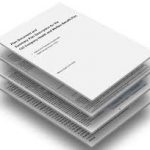The following is a summary of important facts and observations we have accumulated from our research, studies we have read and observations from court cases and from discussions and written advisories from Dept. of Labor, IRS, SEC, and other regulators:
- Most participants (about 76%) feel unprepared to make investment decisions on their own.
- Most participants are financially unprepared for retirement. This is why the Dept. of Labor (DOL) is focusing on the use of professional advisors for providing investment advice and retirement coaching as a means to assist participants with preparing for retirement.
- Unless participants are themselves investment experts they need a personal advisor to guide them with management of their accounts. Those with access to such guidance clearly do better than those without an advisor.
- Most investment advisors are plagued by conflicts of interest when advising plan participants. This is why DOL and SEC are both adopting rules and regulations to require advisors to be governed by fiduciary standards rather than mere suitability standards when giving advice and recommendations to plan participants and IRA owners about investing and IRA rollovers.
- DOL has published material stating that plan sponsors who want to avoid personal liability are expected to provide plan participants with information sufficient for them to answer three questions:
- How much should I be saving?
- Where should I invest?
- What expenses are deducted from my account?
Court decisions provide much evidence that courts have attempted to motivate plan sponsors to provide answers to these questions by holding plan sponsors accountable for not adequately providing opportunities for participants to be able to answer these questions. In most instances these questions remain unanswered.
- New technology offered to participants by service providers, including ROBO investment advice, asset allocation software, self-enrollment, mobile device usage and self-risk-assessment has been proven to be ineffective at improving financial literacy, investment proficiency and administrative accuracy. Participants have increasingly requested and show preference for in-person and one-on-one advice and guidance.
- DOL has mandated annual distribution of numerous notices and disclosures to plan participants and has provided an informative website to advise them of rights, cautions, fees they pay and even how to save and prepare for retirement. This has raised awareness and resulted in an increase in litigation. However, it has done very little to improve savings and retirement readiness for participants.
- New requests by auditors from DOL include proof of the existence of processes, procedures, and minutes of meetings. DOL is also asking for proof of completing Fiduciary Education for plan fiduciaries. DOL wants to know that fiduciaries really know the rules of ERISA, understand them and comply with them.
- DOL, IRS, SEC and the courts all have something to say about how retirement plans are operated and administered. Each has expressed their views on how plan operations and administration should be conducted – – the “Prudent Man” rule and the “Prudent Investor” rule both apply as well as the standards known as “Procedural Prudence” and “Structural Prudence”. Plan fiduciaries must become familiar with and understand what these rules and standards mean and how they impact the performance of fiduciary duties and responsibilities.
The essence of what is meant by a combination of these rules is that if the plan sponsor does not have their own ERISA experts on staff, then it is expected that experts will be hired and their advice will be followed. If experts are not hired, then the plan sponsor will be judged as though they are an expert and if they do not perform their duties to the standard of an expert then they are subject to harsh sanctions. It is understood that experts are few and expensive and if their services are up to the standards of an expert, then their fees are generally considered to be reasonable. Plan sponsors are held responsible for the level of competency of the experts they hire and if the experts hired are not competent, then the plan sponsor is still held responsible and are judged according to “expert” standards and are personally liable for outcomes resulting from any poor advice from experts they hired.
- The ERISA statute provides the rules and regulations which plan sponsors and other fiduciaries must comply with, including:
- Plan sponsors and other fiduciaries have definite basic duties and responsibilities which are:
- Act prudently in all actions and in making decisions.
- Be loyal to participants and beneficiaries and avoid conflicts of interest.
- Diversify plan assets so as to avoid the risk of large losses.
- Follow plan documents unless it is imprudent to do so.
- Fiduciary duties can be delegated but responsibilities for performing the duties cannot be delegated away to vendors or even to co-fiduciaries. Hence, fiduciaries are held accountable for the outcome of delegated duties. They must justify how and why they selected the party to whom they delegated the duty and demonstrate how that party was monitored and evaluated.
- DOL has the authority to impose fines, penalties and other sanctions and to hold fiduciaries personally liable for any breach of fiduciary responsibility resulting in participants or beneficiaries experiencing investment losses or underperformance in their accounts.
- ERISA offers an opportunity for “Safe-Harbor” from personal liability for losses or underperformance in retirement accounts provided that two conditions are met:
- The plan must allow plan participants and beneficiaries to select investments for their own accounts, and . . .
- Fiduciaries must comply with all (not just some) of the provisions, rules and regulations of Section 404(c) of ERISA. The test for compliance is “pass/fail”, not “best efforts”.
- Interestingly, if the Section 404(a) Safe Harbor applies and if its requirements are fully complied with, then outcomes are not as important as the procedures that yield a fiduciary decision. The Safe Harbor statute is a fully “procedural” statute founded on the concepts of “procedural prudence” and “structural prudence”. Therefore, to be in compliance with the statute the plan fiduciaries must be able to prove the existence of processes and procedures that are followed in arriving at a fiduciary decision. If processes and procedures are not in place and are unable to be documented, then plan fiduciaries will most likely be highly exposed to personal liability. Hiring competent experts can help to reduce the exposure to personal liability. The DOL estimates that 90% or more of all plans (including plans of Fortune 500 firms) are out of compliance with ERISA regulations for participant-directed plans.
All of the above rules, regulations and observations are important, and especially if the plan is a participant-directed plan (a 404(c) plan). Therefore, the most important factors are those that will minimize exposure to fiduciary personal liability. There are numerous influences on the manner of plan operation which a plan fiduciary employs to achieve the best retirement outcomes for plan participants. The operating model employed must balance fiduciary issues with human behavior issues. How to best achieve this balance is an area where expert guidance is needed.







